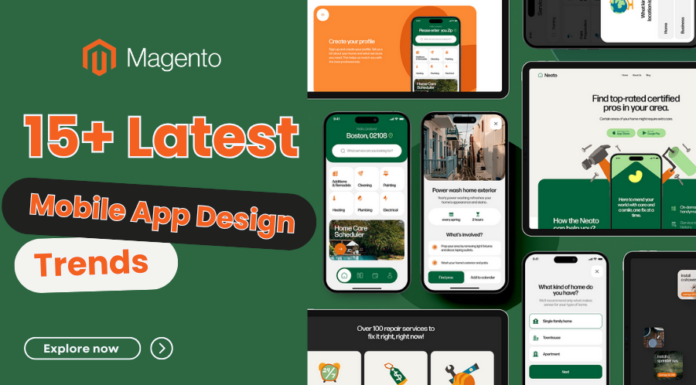
Creating a successful mobile app isn’t just about having a great idea and translating it into lines of code. It involves strategic planning, a clear understanding of the market trends, customer needs, and competitive landscape, along with an innovative approach and the right set of technologies. This guide introduces you to how to create a successful mobile app development strategy
Whether you’re an entrepreneur, a business leader, or a developer looking to make your mark in the thriving app market, this resource will provide you with a comprehensive blueprint for winning mobile app strategies. So, without further ado, let’s dive into the world of strategies for a best-in-class mobile app development.
Table of Contents
I. 10 tips to create a successful mobile app development strategy
The following are the top 10 tips in developing a successful mobile app. Let’s explore what are they!
1. Identify your audience
Identifying your audience is one of the most critical steps in developing a successful mobile app. Knowing who your potential users are will guide many aspects of your development process, from the design and features of the app to the way you market it.

Here’s how you can gain a deeper understanding of your audience:
- Demographics: Start with basic demographic information about your target users, such as age, gender, location, and occupation. Each demographic group has distinct preferences and behaviors, which will influence your app’s design, functionality, and marketing strategy.
- User Personas: Develop detailed user personas based on your demographic and psychographic research. A user persona is a semi-fictional character that represents your ideal customer. Having a clear image of who you’re designing for can ensure that your app meets their needs and expectations.
2. Offer genuine value to customers
Offering genuine value to customers is another essential cornerstone in developing a successful mobile app. In an increasingly competitive app market, it is not enough for your app just to function well—it must provide real, substantial value to its users. Here’s how you can make sure your app stands out:
- Solve a Problem: The most successful apps often address a specific problem or need. They make users’ lives easier, more enjoyable, or more efficient. Make sure your app offers a solution to a problem, whether it’s helping users manage their finances, stay fit, find local events, or learn a new skill.
- Unique Selling Proposition (USP): What sets your app apart from others in the market? Identify your unique selling proposition and make sure it’s something that brings true value to your customers. This could be an innovative feature, a unique design, an exceptional user experience, or anything else that differentiates your app.
3. Define the app’s business model

A well-structured business model will outline how your app will generate revenue, ensuring the sustainability and profitability of your project. There are several common business models to consider:
- In-App Purchases: Here, the app offers digital or physical goods for sale. This could be virtual goods or currency in a game, a subscription to premium content, or tangible products or services.
- Sponsorship: This involves partnering with advertisers who provide users with rewards for completing certain in-app actions. It’s a win-win-win model where users get rewards, advertisers receive engagement, and you earn sponsorship money.
4. Define the scope of features
Establishing the range of functionalities for your mobile app is a crucial element in the app development journey. This is the stage at which you decide the abilities of your app, its functionality, and the way it interfaces with its users.

Here’s a roadmap to navigate this significant step:
- Fulfill User Requirements: Your app’s functionalities should be developed with the end-users needs and expectations in mind. They should enhance the user experience and provide tangible value. Always consider your target users when determining the range of your app’s features.
- Unique Features: Once you have listed the essential features, brainstorm about additional features that could give your app a competitive edge. These could be innovative functionalities, personalized recommendations, connectivity with other apps, or anything else that enhances the user experience and gives your app a unique identity.
5. Choose the right technologies and development approach
Selecting appropriate technologies and a suitable development methodology is absolutely central to the process of successful mobile app creation. These choices will play a crucial role in shaping your app’s functionality, adaptability, longevity, and the ease with which it can be updated and maintained. Here’s an expanded guide to navigating these key determinations:
- APIs and Third-Party Integrations: If your app needs to interact with other apps or services, you’ll need to use APIs (Application Programming Interfaces). For instance, if your app requires users to log in using their Facebook or Google account, you’ll need to integrate with the Facebook or Google API.
- Testing and Deployment Tools: Use automated testing tools to ensure your app functions correctly and provides a good user experience. For deployment, consider using CI/CD (Continuous Integration/Continuous Deployment) tools to automate the business processes of releasing new versions and updates.
6. Design a simple and intuitive UX/UI
Designing a simple and intuitive UX/UI is a fundamental pillar in developing a successful mobile app. The User Experience (UX) and User Interface (UI) not only determine the visual appeal of your app but also significantly influence user satisfaction, user retention, and the overall success of your app. Here’s how to approach this critical aspect:
- User-Centric Design: Always design with the user in mind. Understand your user’s behavior, preferences, and needs to create a design that is not only aesthetically pleasing but also user-friendly and practical. Engage in user research, develop user personas, and create user journey maps to ensure your design effectively meets user needs.
- Easy Navigation: The navigation of your app should be straightforward and intuitive. Users should be able to move around the app easily and reach their desired destination without any confusion. Use universally recognized symbols and terminologies, and keep the navigation menu visible or easily accessible.
7. Upgrade based on feedback
The process of upgrading based on feedback is an essential component in creating a successful mobile app development strategy. This iterative process allows developers to improve their products by directly addressing the needs and pain points of their users, enhancing usability and overall user satisfaction. Let’s delve deeper into how you can effectively leverage user feedback for app upgrades:
- Gather Feedback: Feedback can be collected in a multitude of ways. App reviews on the Google Play Store or Apple App Store are often a rich source of user feedback. Surveys and questionnaires sent to users via email marketing or in-app prompts also generate useful insights. Additionally, consider creating a dedicated feedback or support email where users can communicate any issues or suggestions directly.
- Prioritize Feedback: Not all feedback should be treated equally. Prioritize feedback based on its potential impact on the user experience and the number of users it affects. Urgent issues that affect a large number of users should be prioritized over smaller, isolated problems.
II. Conclusion
Crafting a successful mobile app development strategy entails understanding your audience, providing genuine value, defining a robust business model, carefully outlining features, selecting appropriate technologies, designing an intuitive UX/UI, and continuously improving based on user feedback. Success is marked by user retention and the ability to adapt over time. By following a strategic approach, you can create a compelling app that not only stands out in the market but also achieves long-term success.












![[SALE OFF] Discount 30% All Premium Extensions On Christmas And New Year 2025 christmas-and-new-year-2025](https://landofcoder.b-cdn.net/wp-content/uploads/2024/12/christmas-and-new-year-2025-1-218x150.png)






